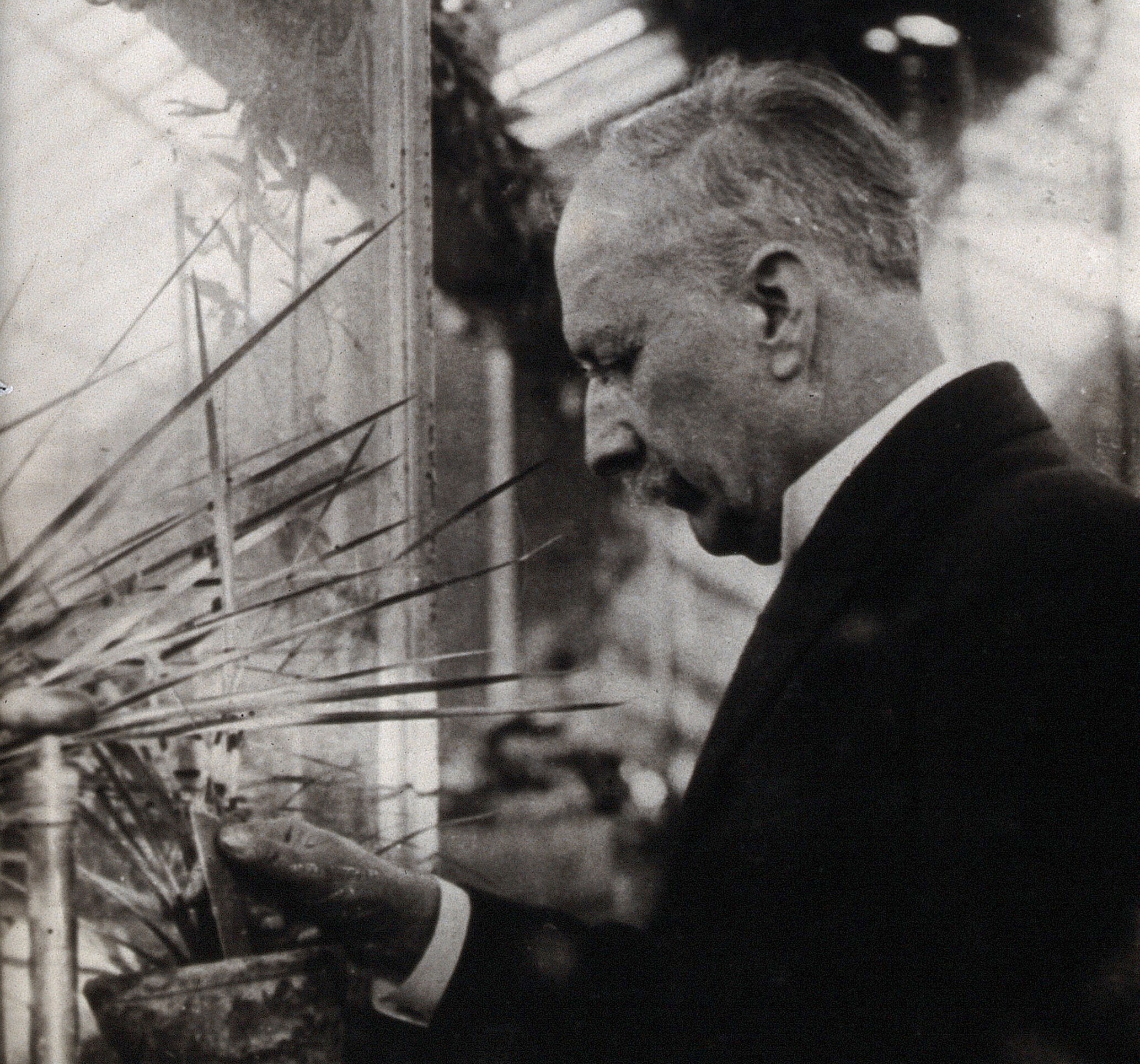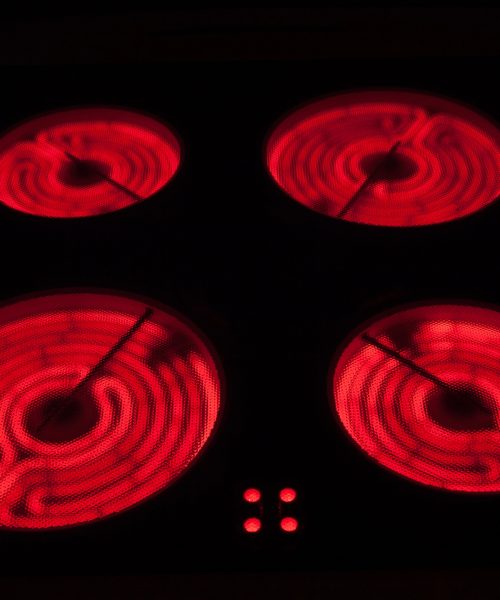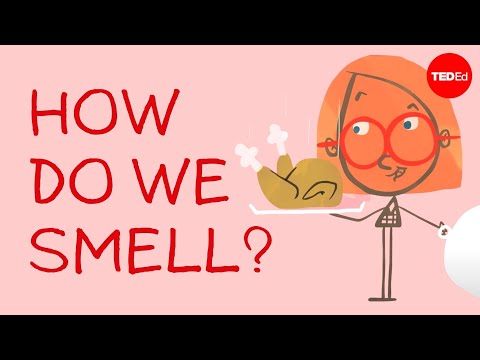In the early 1920s, on the left bank of the Seine just outside Paris, a small laboratory garden bloomed on a plot of land sandwiched between the soaring Paris Observatory and the sprawling grounds of Chalais Park. Unlike a typical garden filled with well-groomed plants and the smell of fresh-turned soil, this garden had an industrial feel. Dubbed “the Garden of Wonders” by a contemporary journalist, the plot was lined with elevated white boxes fed with water from large glass canisters. Nearby greenhouses included equally unusual accessories. But it’s what happened inside the low-slung laboratory buildings that made this garden so wondrous.
In August 1925, Popular Science contributing writer Norman C. McCloud described how Daniel Berthelot—a decorated chemist and physicist from France—was conducting revolutionary “factory-made vegetable” experiments in his Garden of Wonders. Berthelot, son of Marcellin Berthelot, a renowned 19th century chemist and French diplomat, was using the garden to expand upon his father’s groundbreaking work. Starting in 1851, the elder Berthelot began creating synthetic organic compounds, such as fats and sugars (he coined the name “triglyceride”), from inorganic compounds like hydrogen, carbon, oxygen, and nitrogen. It was a revolutionary first step toward artificial food.
“[The younger] Berthelot already has produced foodstuffs artificially by subjecting various gases to the influence of ultra-violet light,” wrote McCloud. “These experiments,” he added, quoting Berthelot, “show that by means of light, vegetable foods can be manufactured from air gases.” But Berthelot’s experiment didn’t exactly catch on. A century later, most food is still grown the traditional way—by plants—but the idea of manufacturing food in controlled, factory environments has been gaining ground. In fact, Berthelot’s revolutionary idea may finally be bearing fruit—just not in the way he imagined.

A revolution in food chemistry
Berthelot never fully accomplished his goal of trying to artificially reproduce what plants do naturally. Nonetheless, his experiments, as sensational as they might seem today, would have been considered quite plausible in 1925. That’s because his father’s discoveries had unleashed a revolution in chemistry and a tidal wave of optimism about the future of food. By the 1930s, chemists had begun synthesizing everything from basic nutrients, like vitamins, to medicines, like aspirin (acetylsalicylic acid), to food additives, such as artificial thickeners, emulsifiers, colors, and flavors.
In an interview for McClure’s magazine in 1894 dubbed “Foods in the Year 2000,” Berthelot’s father boldly predicted that all foods would be artificial by the year 2000. “The epicure of the future is to dine upon artificial meat, artificial flour, and artificial vegetables,” wrote Henry Dam for McClure’s, articulating Marcellin Berthelot’s vision. “Wheat fields and corn fields are to disappear from the face of the earth. Herds of cattle, flocks of sheep, and droves of swine will cease to be bred because beef and mutton and pork will be manufactured direct[ly] from their elements.”
Welcome to the Garden of Wonders
Such was the vision that the younger Berthelot was pursuing in his Garden of Wonders. His goal, he told McCloud, was to produce “sugar and starch from the elements without the intervention of living organisms.” To achieve this, Berthelot envisioned a factory with “glass tanks of great capacity.” Gases would be pumped into the tanks, and “suspended from the ceiling [would] be lamps producing the rays of ultra-violet light.” Berthelot imagined that when the chemical elements combined “through the glass walls of the tank we shall see something in the nature of a gentle snowfall that will accumulate on the floor of the tanks…our finished product—vegetable starches and vegetable sugars created in a faithful reproduction of the works of nature.”

By 1925, he had succeeded in using light and gas (carbon, hydrogen, oxygen, and nitrogen) to create the basic compound formamide, which is used to produce sulfa drugs (a kind of synthetic antibiotic) and other medicines as well as industrial products. But his progress toward reproducing photosynthesis ended there. Berthelot died just two years after McCloud’s story ran in Popular Science, in 1927, without ever realizing his dream.
Despite the bold predictions of the time, producing food from only air and light was wildly aspirational in 1925, if for no other reason than photosynthesis was poorly understood. The term had only been coined a few decades earlier when Charles Barnes, an influential American botanist, lobbied for a more precise description of a plant’s internal mechanisms than the generic “assimilation” then in favor. Chlorophyll had been discovered in the prior century, but what happened at a cellular level in plants remained largely theoretical until the 1950s. Although Berthelot may have been onto something with his experiments, adding to the momentum that became the artificial food industry, he was a long way from replicating what comes naturally to plants. We still are, but recent discoveries may have enabled a workaround—depending on your definition of “food.”
A modern answer to Berthelot’s innovative garden
From vertical indoor farms to hydroponics to genetically modified crops, since the 1960s commercial agriculture has been focused on coaxing more yield from fewer resources, including land, water, and nutrients. The drive began when Nobel Peace Prize winner Norman Borlaug, an American biologist, helped spark the Green Revolution by selectively breeding a grain-packed, dwarf variety of wheat. The theoretical limit of that revolutionary goal would liberate food production from traditional agriculture altogether, eliminating all resources except air and light—Berthelot’s original vision.

In the last century, we’ve inched toward creating food from nothing, making progress by teasing apart the incredibly complex biochemical pathways associated with plant physiology. But if we’ve learned anything since Berthelot’s experiments, it’s that photosynthesis—what plants are naturally programmed to do—can’t be easily replicated industrially. But that hasn’t stopped a handful of companies from trying.
In April 2024, Solar Foods opened a factory in Vantaa, Finland—a sleek facility where workers monitor large tanks filled with atmospheric gases. Inside the tanks, water transforms into a protein-rich slurry. Dehydrated, the slurry becomes a golden powder packed with protein and other nutrients, ready to be turned into pasta, ice cream, and protein bars. The powdery substance, Solein, resembles Berthelot’s vision, as does the factory, which uses atmospheric gases to enable “food production anywhere in the world,” according to a 2025 company press release, “as production is not dependent on weather, climate conditions, or land use.” But the similarities with Berthelot’s vision end there. Solar Foods may not require land or plants to produce food, but their technology derives from a living organism. Using a form of fermentation, it relies on a microbe to digest air and water to produce protein.
Related Archival Stories
The U.S.-based company Kiverdi uses a similar microbial fermentation process, first devised by NASA as far back as the 1960s for deep space travel, to convert carbon dioxide into protein. Austria-based Arkeon Technologies has developed its own microbial fermentation process to also produce food from carbon dioxide without the need for land or other nutrients. Microbial fermentation may represent a promising new chapter in synthetic foods, but don’t expect tomatoes or corn to materialize from thin air anytime soon—it’s not artificial photosynthesis.
While Berthelot’s understanding of photosynthesis was primitive a century ago, he was ahead of his time in many ways, and his vision was remarkably prescient. Although we still haven’t figured out how to replicate photosynthesis chemically—literally growing fruits and vegetables as plants do from air and light—it’s worth acknowledging the strides we’ve made in just the last decade: Companies like Arkeon Technologies and Kiverdi may help remove excess carbon dioxide from the atmosphere while offering solutions to future food shortages. Or they may not. Only the next century will tell.






